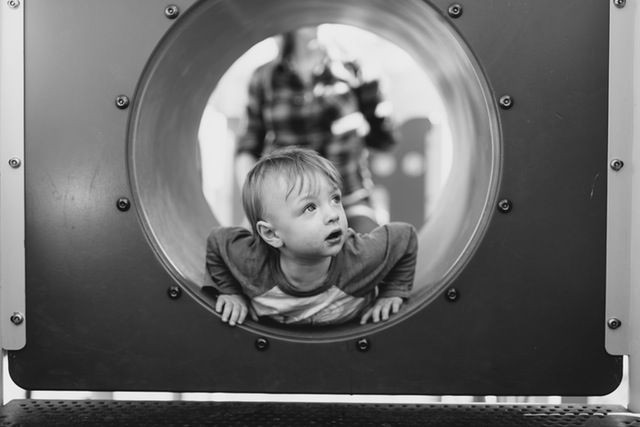Speech Delay, Autism Treatment? Baby's First Words Linked To Objects Seen During Feeding Time, Science Finds

Many of us babble and coo along with infants during "baby talk." Slowly, babbles turn into words, but what determines an infant's first words? Researchers at Indiana University have found these words are contingent on repetitive exposure to objects, especially during mealtime.
“We think that children’s first words are predictable based on their visual experience with objects and the prevalence of those objects in their visual world,” said Linda Smith, senior author of the study, and a professor in the Psychological and Brain Sciences Department at Indiana University, in a statement.
Previous research has found infants tend to learn new words based on objects they find aesthetically interesting. Researchers noted 10-month-old babies simply “glue” a label onto the most interesting object they see. Moreover, infants tend to grasp the names of these objects fairly quickly in just five minutes. Around 18 months, children learn to use the speaker's interest, such as where the eyes gaze, as a guide to learning.
Read More: Quick Test Shows How Children With ASD Process Information Differently
In the recent study, published in Royal Society Philosophical Transactions B, Smith and her colleagues sought to understand how infants “choose” their first words by examining the visual side. Head-mounted cameras were placed on eight children — five girls and three boys — between eight and ten months old, for an average of 4.4 hours. Caregivers were told the cameras would observe children's daily activities, not words or objects specifically. The caregivers could choose when to activate the camera.
Mealtime scenes, defined in the study as any eating by anyone at any time or location, were analyzed. There were over 900,000 mealtime frames, with one image sampled every five seconds. Five objects were recorded for each frame for a total of 745 objects.
These objects were divided into “first nouns,” which are are acquired by half of all 16 month olds; “early nouns,” which are known by half of all 30 month olds; and “late nouns,” which are acquired at later stages of learning. Words such as table, shirt, bowl, cup, bottle, food, spoon, and plate are considered first nouns.
Read More: Vitamin B May Help Improve Communication And Language Skills In Children
The findings revealed a strong correlation between the most frequently appearing objects, and first nouns, with the top 15 of these words appearing in the images collected by the study.
“The comparison of first and early nouns was particularly striking, since both sets of object names are acquired quite early in childhood and refer to objects common in households with infants,” said Elizabeth Clerkin, first author of the study, and a Ph.D. student in the IU Bloomington Department of Psychological and Brain Sciences, in a statement.
Environment during mealtime is important because it constantly involves a very small number of objects, with the names of these repeatedly seen objects among those normally learned first by infants. This suggests visual experience is vital in very early word learning.
Read More: 3 Surprising Ways To Help Autistic Kids Communicate
Smith advises parents: “Taking account of the visual brings a whole new dimension of word-learning into view.”
“If all you ever worry about is the word side of word-learning, you may be missing half the problem: visual cues that aid language learning” she said.
Visual Processing Problems In Speech Delay And Autism
Smith's study has implications for future interventions for children with delayed speech and other language disorders. Expressing difficulty in learning words could be linked to visual processing problems. For example, some of the most complex symptoms of autism are visual problems.
Vision in children with autism is different compared to that of the general population due to various impairments. Primary visual processing problems cause a range of difficulties to a person on the autism spectrum. Often the most disturbing is their difficulty recognizing faces and expressions.
Children who experience speech disorders may either not pick up visual regularities in their environment, or the households they live in lack these regularities. Regardless, it’s essential to explore the role of words and vision when it comes to early language learning.
Source: Clerkin EM, Hart E, Rehg J et al. Real-world visual statistics and infants' first-learned object names. Royal Society Philosophical Transactions B. 2016.
Published by Medicaldaily.com



























